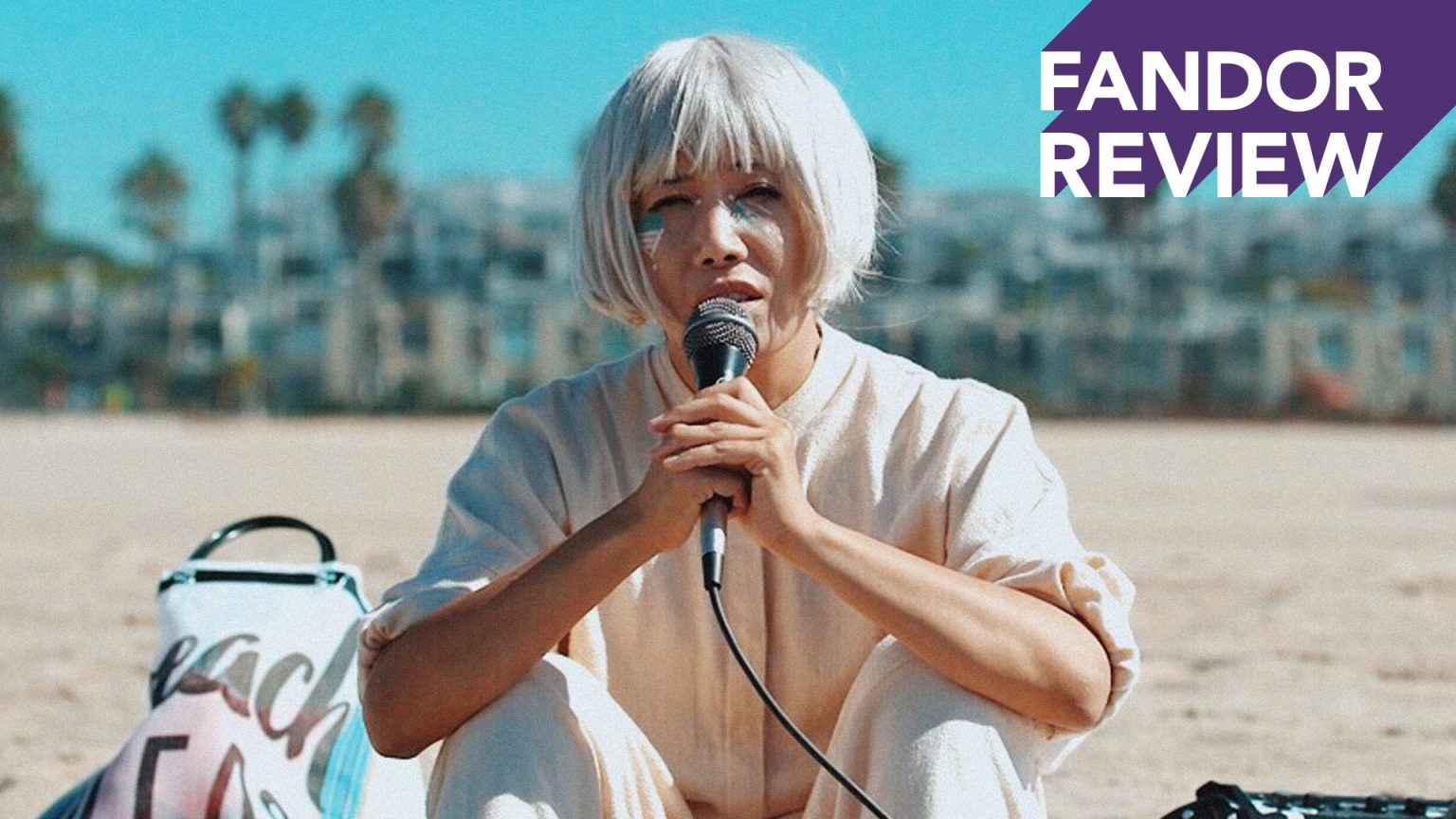I recently saw White Rabbit, directed by Daryl Wein, at the 2018 Asian American International Film Festival in New York City (the film premiered earlier this year as part of the Sundance Film Festival’s NEXT competition). With a slender and humble seventy-one-minute runtime, White Rabbit paints a simple story about an emotionally complicated artist trying to reconcile her various identities amidst the backdrop of 2018 Los Angeles. What the film lacks in emotional resonance, it makes up for in earnest crackles of potential, and an overdue introduction to a wonderful lead.
We first meet Sophia (Vivian Bang, who also co-wrote and co-produced the film), a Korean-American performance artist, in a large Los Angeles supermarket. Using a megaphone and taking on the persona of a Korean immigrant, Sophia expounds upon the oft-overlooked hardships that such people have faced in the United States. Some shoppers stop and watch, perplexed and curious, and others go about their business indifferently. For every sincere public display, Sophia also takes time to post videos of her pressing her face into food items (perhaps most memorably, a pile of cheese puffs).
While trying to make it as an artist who makes art that people don’t pay for (to paraphrase her words), Sophia uses TaskRabbit to find work as a personal organizer. Sophia’s life becomes more challenging when she meets and quickly develops feelings for Victoria (Nana Ghana), an African-born American woman who shares Vivian’s experience of being a “hyphen American.” As Vivian goes about her days, she’s faced with perpetual challenges to her identity. How does she define herself as an artist? How does she react when a white director tries to cast her in a role that exploits Asian stereotypes? How does she respond when she shows up to organize and is asked to clean a carpet instead? Even in small moments like this, we witness a person trying, sometimes successfully, sometimes not, to assert her presence in line with her intentions.
Along the way, the film makes both overt and subtle statements. Sophia’s all-consuming performance art — at the supermarket, for example — makes the viewing audience feel just as present as the onlookers in the movie. Channeling an organic and energetic rapport, Sophia and Victoria’s conversations have much to say about the characters’ racial backgrounds, yet they aren’t anchored to the subject by one-dimensional dialogue. There’s more for them to speak about than that. They talk about race, but they also talk about being women, and artists, and people.
The film is at its weakest when it’s trying to manufacture drama, as with Sophia’s eventual behavior towards Victoria, or her tearful conversation with an ex-girlfriend. Though Bang is a capable dramatic actress, the writing and circumstances feel forced, as though feeling a need to create unnecessary emotional spikes. Instead, the film is most at home in its smallest moments, like a brief shot of Sophia struggling to bike uphill, or her genuine response to a little boy who asks if he can ride on her back like a pony.
In moments like these, Vivian Bang really shines. Though she has been working as an actor for some time, the honesty in her portrayal of Sophia gives her a fresh voice. A lack of visibility often defines Sophia’s art in the film. One can only hope that Bang continues to make thoughtful films that continue to amplify her voice.




